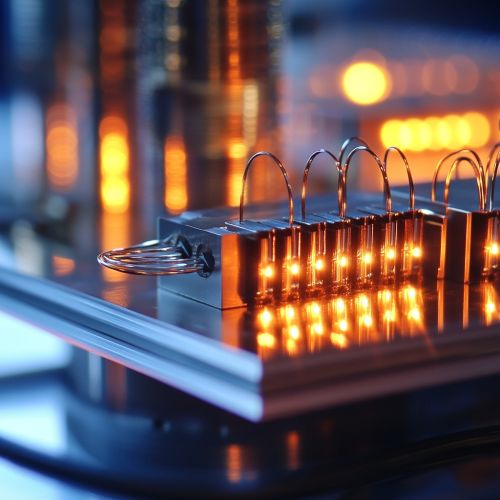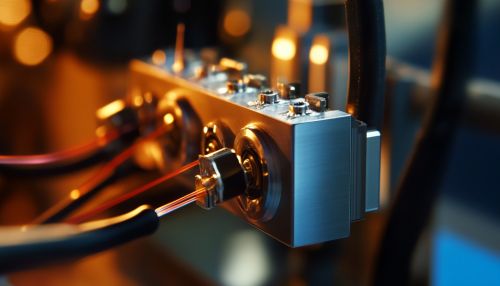Pyroelectric detectors
Introduction
Pyroelectric detectors are sensors that exploit the pyroelectric effect to detect changes in temperature. These detectors are widely used in various fields, including infrared spectroscopy, thermal imaging, and motion detection. Pyroelectric materials generate a temporary voltage when they are heated or cooled, making them ideal for detecting changes in temperature.
Pyroelectric Effect
The pyroelectric effect is a property of certain crystalline materials that generate an electric charge in response to a change in temperature. This effect is closely related to the piezoelectric effect, where an electric charge is generated in response to mechanical stress. The pyroelectric effect is observed in materials with a non-centrosymmetric crystal structure, which allows for the separation of positive and negative charges within the material.
Materials
Several materials exhibit pyroelectric properties, including:
- **Triglycine sulfate (TGS)**: Known for its high pyroelectric coefficient and sensitivity.
- **Lithium tantalate (LiTaO3)**: Offers high stability and is commonly used in infrared detectors.
- **Polyvinylidene fluoride (PVDF)**: A polymer with good pyroelectric properties and flexibility.
Working Principle
Pyroelectric detectors operate based on the principle that a change in temperature causes a redistribution of charges within the pyroelectric material. This redistribution generates a temporary voltage across the material, which can be measured and used to detect temperature changes. The detectors typically consist of a thin film of pyroelectric material sandwiched between two electrodes.
Types of Pyroelectric Detectors
There are several types of pyroelectric detectors, each designed for specific applications:
Single-Element Detectors
Single-element detectors consist of a single piece of pyroelectric material and are used in applications where a single point of temperature measurement is sufficient. These detectors are commonly used in infrared spectroscopy and temperature monitoring.
Linear Arrays
Linear arrays consist of multiple pyroelectric elements arranged in a line. These detectors are used in applications requiring spatial resolution along one dimension, such as line scanning in thermal imaging.
Focal Plane Arrays (FPAs)
FPAs consist of a two-dimensional array of pyroelectric elements and are used in thermal imaging cameras. These detectors provide high spatial resolution and are capable of capturing detailed thermal images.
Applications
Pyroelectric detectors are used in a wide range of applications due to their sensitivity to temperature changes and ability to detect infrared radiation.
Infrared Spectroscopy
In infrared spectroscopy, pyroelectric detectors are used to measure the intensity of infrared radiation absorbed by a sample. This information is used to identify the chemical composition of the sample.
Thermal Imaging
Thermal imaging cameras use pyroelectric detectors to capture images based on the infrared radiation emitted by objects. These cameras are used in various fields, including medical diagnostics, building inspections, and military applications.
Motion Detection
Pyroelectric detectors are commonly used in motion detection systems, such as security alarms and automatic lighting. These detectors can sense the infrared radiation emitted by a moving object, triggering an alarm or activating a light.
Advantages and Limitations
Pyroelectric detectors offer several advantages, including high sensitivity, fast response time, and the ability to operate at room temperature. However, they also have some limitations, such as sensitivity to environmental noise and the need for periodic recalibration.
Future Developments
Research is ongoing to improve the performance of pyroelectric detectors and expand their applications. Advances in materials science and nanotechnology are expected to lead to the development of new pyroelectric materials with enhanced properties. Additionally, integration with advanced electronics and signal processing techniques is likely to improve the sensitivity and accuracy of these detectors.
See Also


